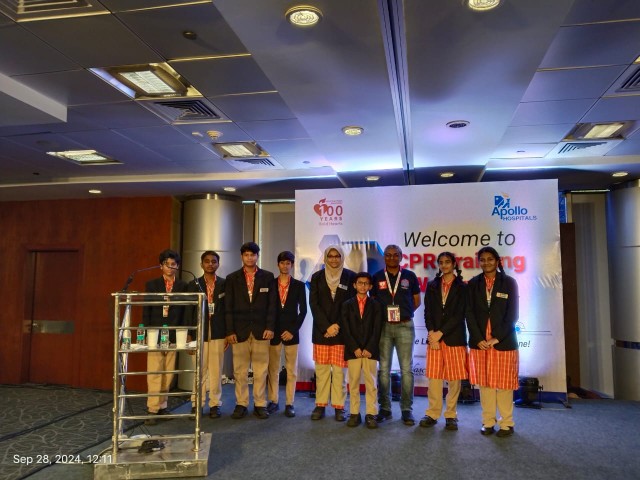(Organized by Apollo Hospital)

(Class VIII)
On Saturday, 28th of September, Mount mercy had unique opportunity to attend a CPR training event organized by Apollo Hospital. The event was both informative and hands-on, designed to teach participants the essential skills needed to perform Cardiopulmonary Resuscitation (CPR) effectively. Learning CPR can make the difference between life and death in critical situations, and I was glad to be part of this valuable experience.
The session began with instructions on what to do if someone is choking. The trainers emphasized the importance of staying calm and reacting quickly. We were taught how to identify a choking person, how to help them dislodge the object, and the basic first aid steps to take if the situation worsened.
Next, we moved on to the core of the training: learning CPR. The instructors walked us through the process step by step, demonstrating on mannequins so we could practice. There are four to five critical steps involved in performing CPR correctly:
- Check for Safety: Before you approach the unconscious person, it’s essential to make sure the environment is safe for both you and the victim.
- Check the Patient’s Condition: Approach the person, check for consciousness, and try to wake them by tapping or speaking to them.
- Check Pulse and Breathing: After checking their condition, quickly assess if they are breathing or have a pulse. If not, proceed to the next steps.
- Call for Emergency Help: Before starting CPR, call for help immediately. Dial emergency services and request an ambulance.
- Begin CPR: Start performing chest compressions. You must deliver 100 to 120 compressions per minute, keeping your hands straight and applying enough pressure to help the heart pump blood. Your posture is important—kneel beside the patient and ensure your arms are in a locked, straight position while compressing.
One important takeaway from the session was how different CPR is for infants. Instead of using your palms, you perform chest compressions with just two fingers to avoid causing injury, as their bodies are more fragile.
After the practical session, we were given some time to ask questions and clear any doubts we had. The instructors were incredibly helpful, providing tips to ensure we perform CPR efficiently under pressure. The event concluded with snacks and a recap of the life-saving techniques we learned.
The entire experience made me realize how crucial it is to be prepared for emergencies. Knowing CPR can mean the difference between life and death. I encourage everyone to learn this skill, as you never know when it could save a life.

